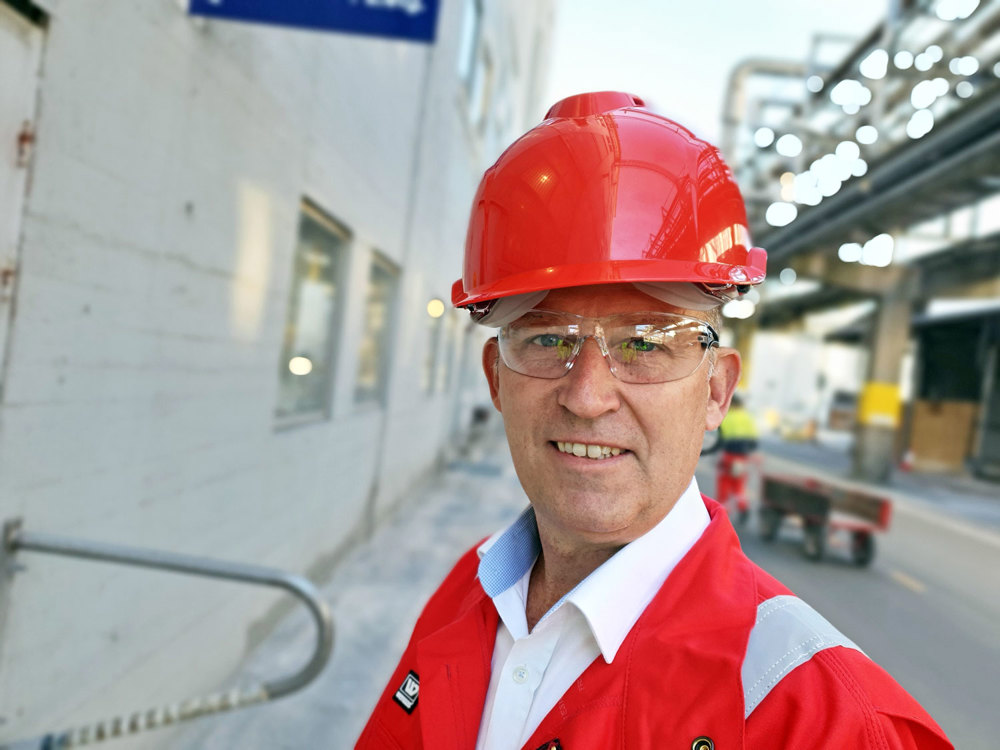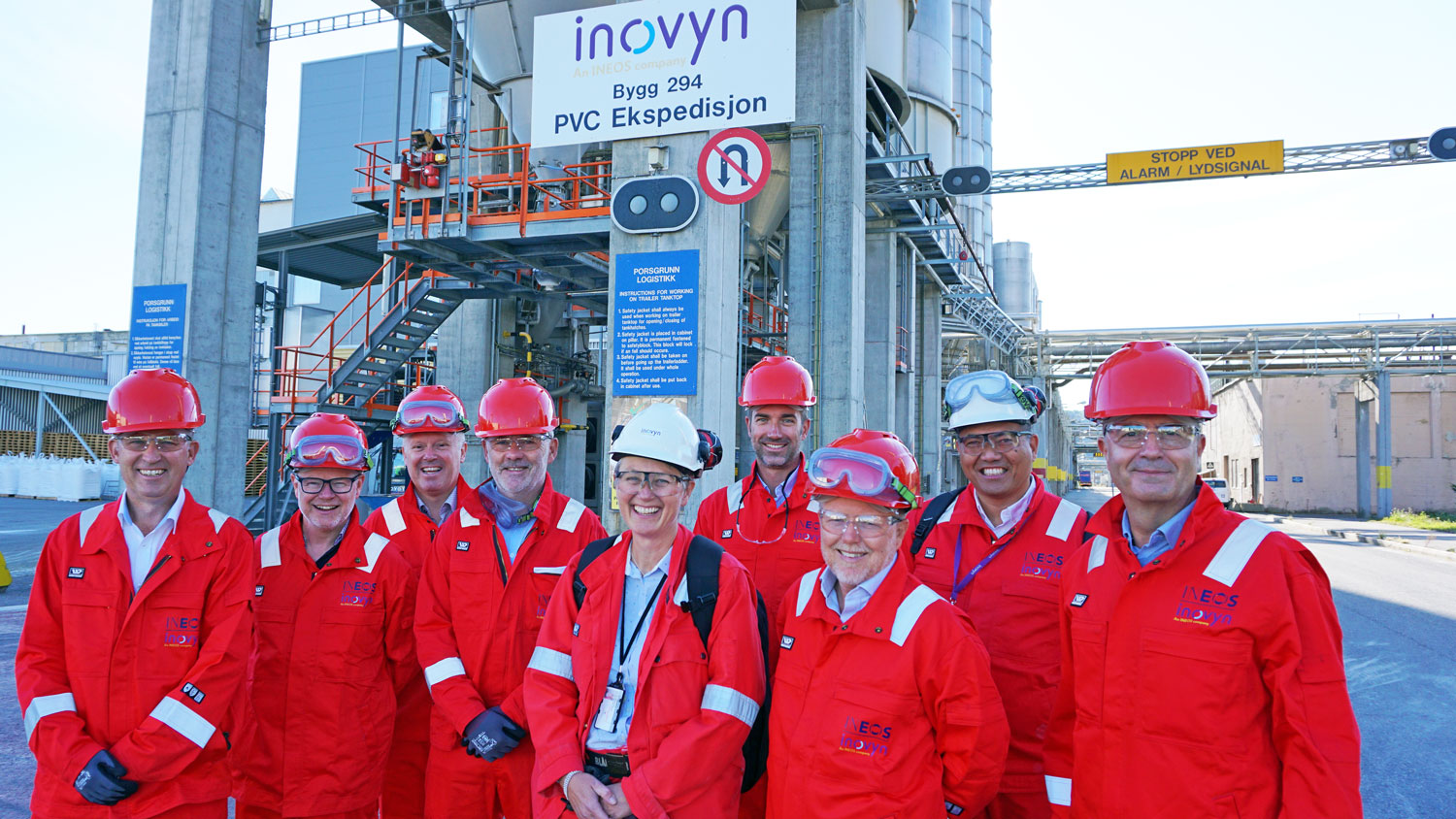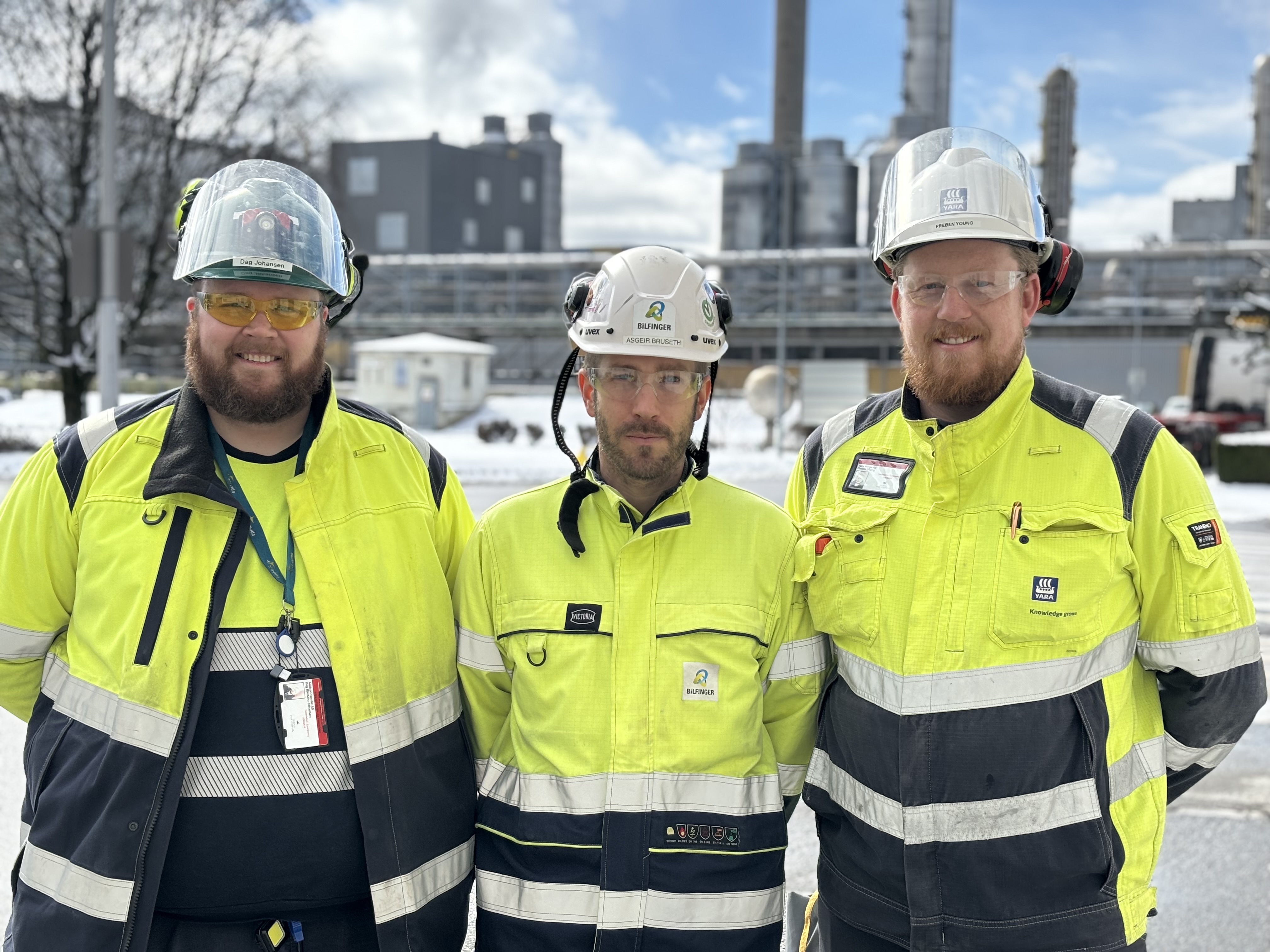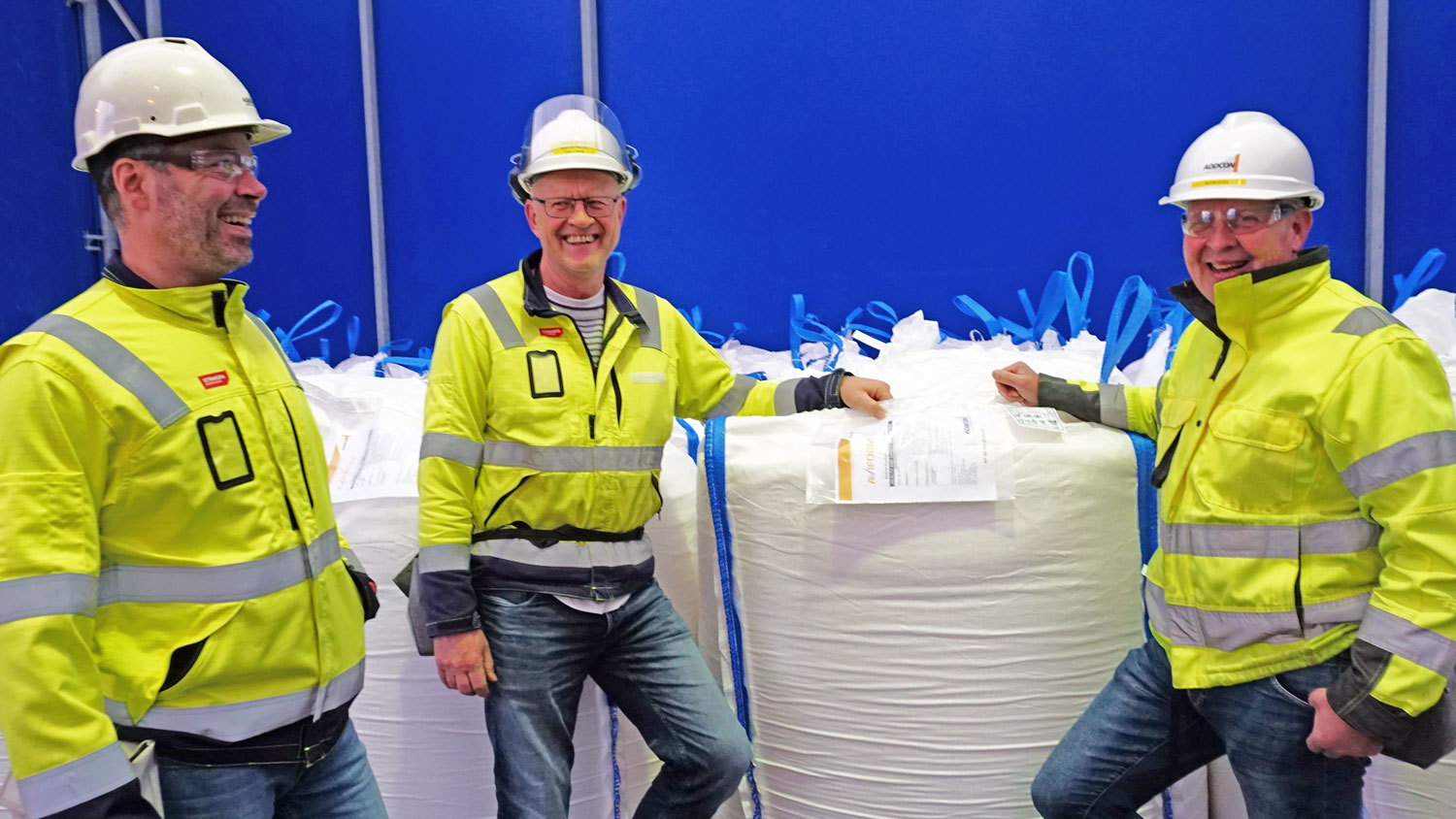In addition to the annual review of INOVYN Norge's strategy plans with the site management team, there was also time for plant visits and town hall meeting at the PVC plant at Herøya and the chlorine/VCM plant at Rafnes, as well as a separate meeting with the mayors in Bamble and Porsgrunn to discuss the demanding energy situation in Europe.
Tough competition - unpredictable energy market
At the town hall meeting, CEO Geir Tuft talked about the challenges Inovyn face in the export markets, the competitors who are producing at almost half the cost and the unpredictable energy market in Europe.

"We are among the most competitive in Europe, if not the most competitive, but we are now competing with others who are producing the product at almost half of our costs due to low raw material prices," said Tuft at the meeting with employees in the PVC plant at Herøya.
Our current short-term challenge is to live in a market where we are out-competed in terms of production costs. When we sell our products from here, e.g. to Turkey and India, we are competing with US producers having less than half the raw material costs.
Meanwhile, the production here is particularly good, you set annual records, and we have made expansions and investments. But we may experience periods where we earn less than our costs this autumn. In the short term, it’s a matter of staying strong in the market. We need to think about what we do next."
Looking at expansion opportunities
"We are looking for opportunities to further expand our capacity," said Tuft.

"The Venus2 project in the PVC plant is very interesting and fits well with our strategy, although I can't promise anything. The prerequisites for investment here are good. We invest in areas with good conditions and which are at the right end of our cost curve. We have invested significantly in these facilities over the 14 years that Ineos has owned the plants, and also before that, with Hydro. So we are among the most competitive, if not the most competitive in Europe. But at the same time we're also competing with the Americans. It’s part of the picture now."
Big ambitions now and in the carbon-neutral market in 2050
"We must survive in the current market, while also making long-term choices," said Tuft.
"With our 15 sites in Europe, we have a major goal to help decarbonise the world. And Europe has a major goal when it comes to what kind of industry we should have. It is clear that the short-term challenge of surviving in the market is currently our biggest challenge. But in the long term, we must survive in a market that will become carbon-neutral towards 2050. There are also large and important investments to be made. I had hoped that the Støre government had the same ambitions as we and Yara have here at Herøya and Rafnes."
Norway lagging behind
As far as new power and the infrastructure investments that are required are concerned, Norway is lagging behind according to the Head of Inovyn. 
"We are investing in ways to reduce our carbon footprint and need power, competitive green power. Just for Yara's and our hydrogen ambitions here in Grenland, we’re talking perhaps an extra power requirement of 3–4 terra watt hours per year. We already use 1.3 TWH/year currently. If we are to succeed with the green transition, Norway must ensure that this power is produced and delivered in a decent grid to Rafnes and Herøya. These are and will be important issues in the future."
Need more electric power
"If you add in Europe’s goals, then Europe needs 50% more capacity, from 1,000 GW to around 1,500 GW. And the same goes for Norway.
All of Norwegian society, power producers, government and industry must work together to find out how we can exploit Norway’s major competitive advantage, which is electric power. We have of course sent a message about this to the government, and will continue to do so.
Our message is that we need more power, competitive green power. We have invested heavily in Norway, and we would like to continue doing so."
13. September 2022




